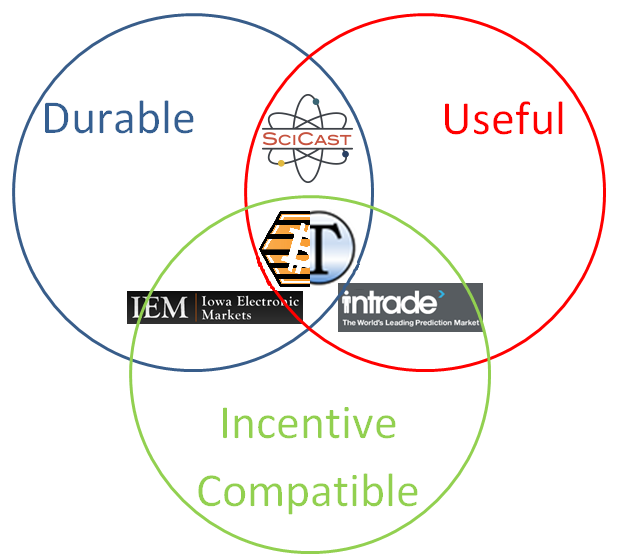In general, all Bitcoin 2.0 Projects are major longshots…Bitcoin 1.0 is the real innovation.
Giving Hivemind a Chance
Peter Todd reviewed my project, said it was “clever”, but still gave it “a low chance of success”.
I thought it was a great endorsement. I, myself, give it (something interpret-able as) a “low chance” of success.
But, surely, something with a low chance of success is bad, right? Doesn’t this contradict Andrew Poelstra’s “optimism” about the project’s feasibility (and the general excitement among Bitcoin’s most skeptical)?
Well, I can only speak for myself, but I think there’s a lot going unsaid.
Let me show you what I mean, by giving you my own completely subjective opinions on various “Bitcoin 2.0” projects:

*Assumes the use case is “having fun” (and not transferring money).
And by “domain expert” I basically mean “someone in the relevant field (payments, auditing, cryptography, computer-science, etc) who has heard of these projects”.
Why are some of the percentages so low, you ask? Well, my blog will carefully explain much of that to you in painstaking detail, but the short answer is, [1] the overwhelmingly difficult technical, security, and maintenance problems aside, and [2] the overwhelmingly powerful network-effects-of-money aside, the real reason is that [3] these projects don’t actually solve any problem whatsoever.
They raised money because of timing: new, inexperienced Bitcoin-ers had just earned a lot of money (via the exchange rate appreciation of late 2013), their brains told them to “do that again, because it worked last time”, and yet that impulse coincided with general “warning burnout” among those who actually knew what they were talking about (and could have prevented a lot of wasted money). The insular nature of the internet fueled the relentless march of groupthink.
Likelihood vs. Expected Value
Hivemind only gets a tiny little 42%, but that isn’t what’s important. There was once a time when Bitcoin had lots of open questions: the project was near-universally misunderstood, it had bugs that let people steal/print money, people tripped over their words and had trouble communicating their thoughts about the project.
It’s normal for something that is new to start off with a lot of risk; with hard work, that risk can decrease, ultimately resulting in a superior product.
Conversely, being a longshot doesn’t necessarily make something “good” or “bad”. In Russian Roulette, you’re pretty unlikely to die, but it’s still a pretty stupid thing to do. On the “good” side, you’re very unlikely to ever need your homeowner’s or life insurance, but those are often smart things to have anyway.
To give you an idea of my perspective, here’s my completely subjective portrayal of risks and rewards for a few 2.0 projects:

Why so much better?
Well, obviously I (the creator) am a little biased. In addition to this answer, I’m just encouraged by the fact that the project really has almost nothing to do with new cryptography or programming at all: all of the real work is done by humans. Moreover, HM (like Bitcoin) can be readily (and favorably) compared to actual, real-life things that were themselves reasonably successful.

I also designed it in 2012-2013, long before all of this other junk showed up!
comments powered by Disqus
